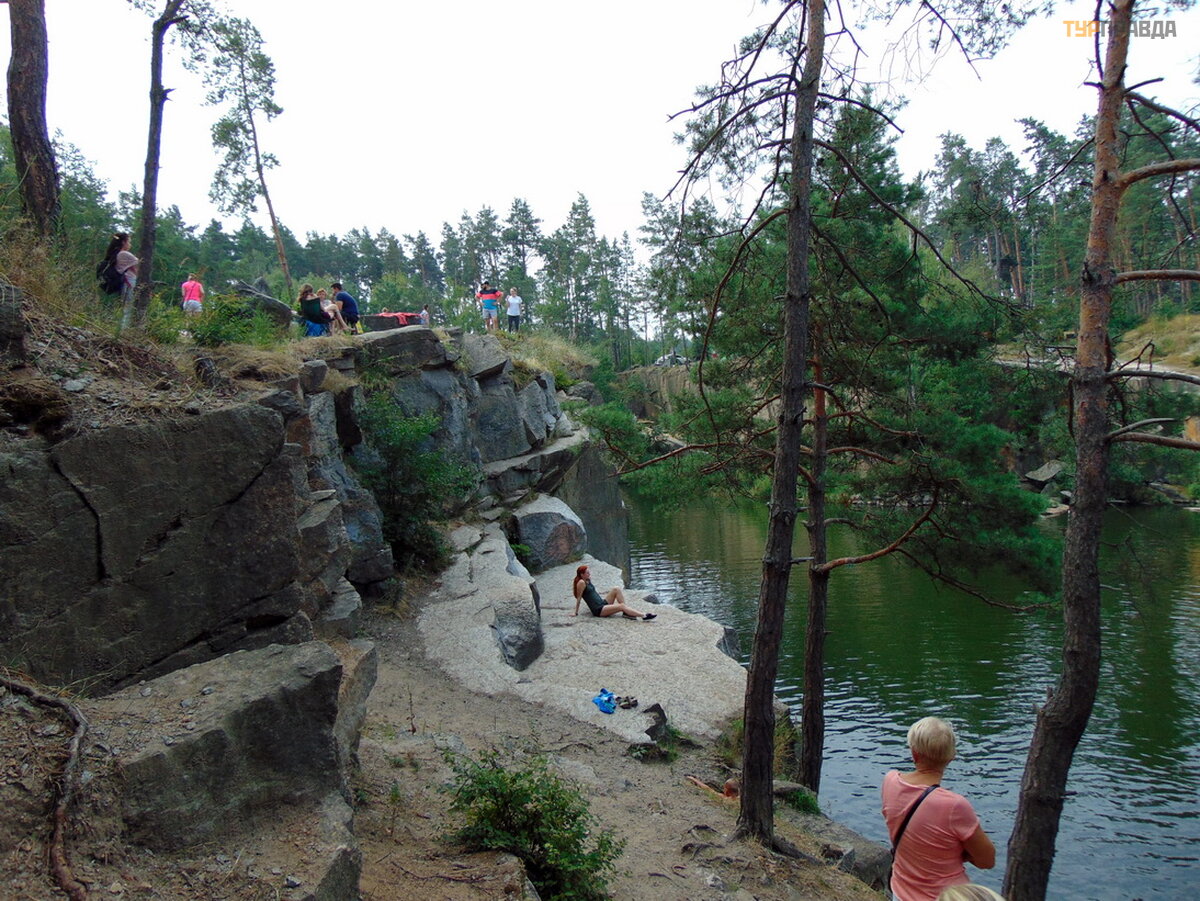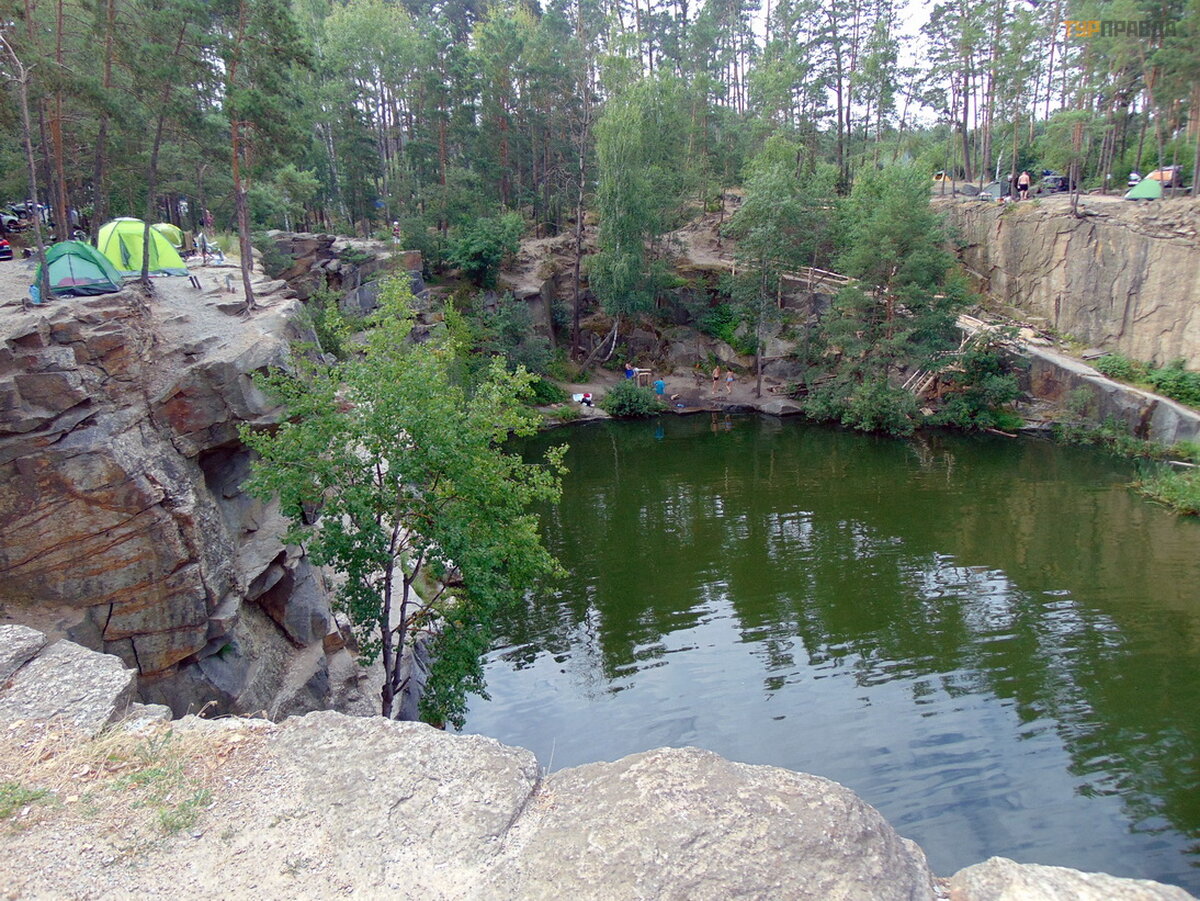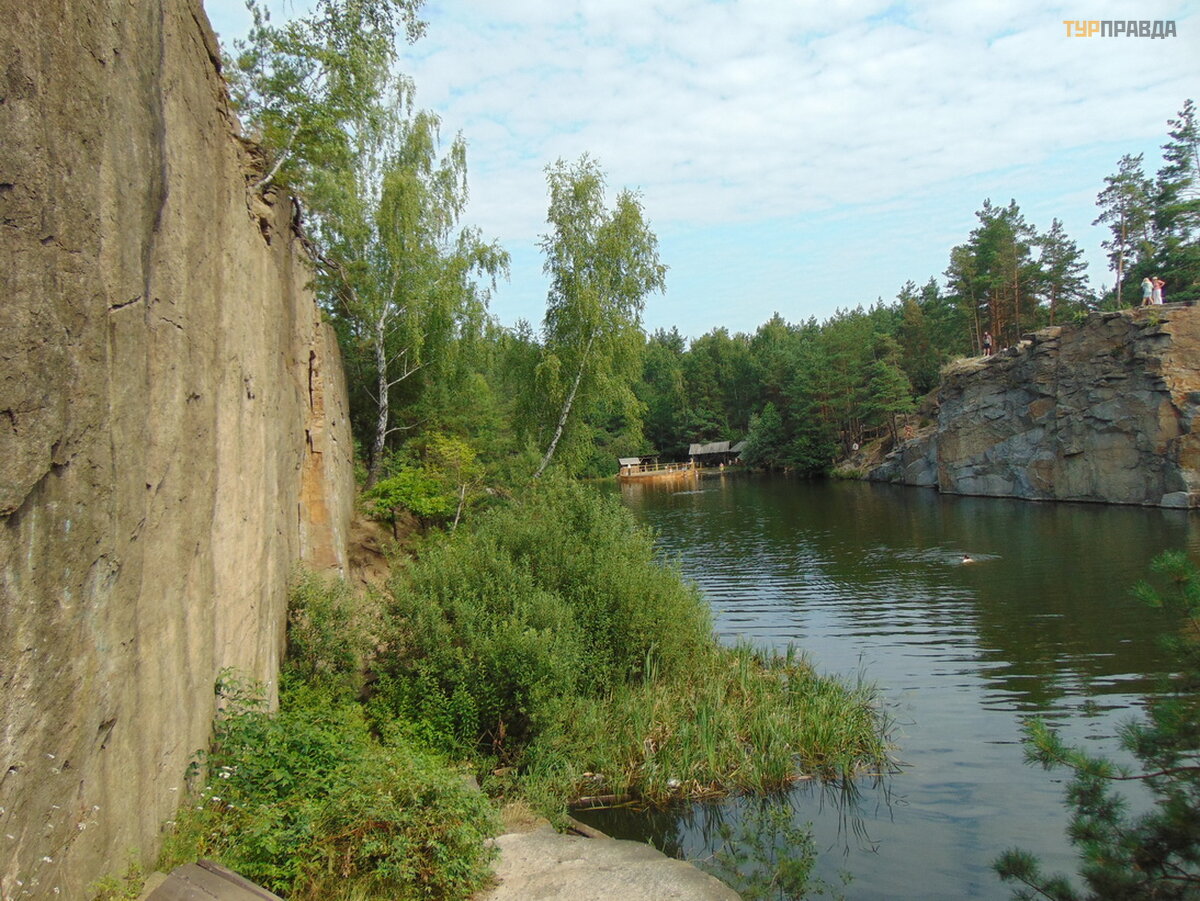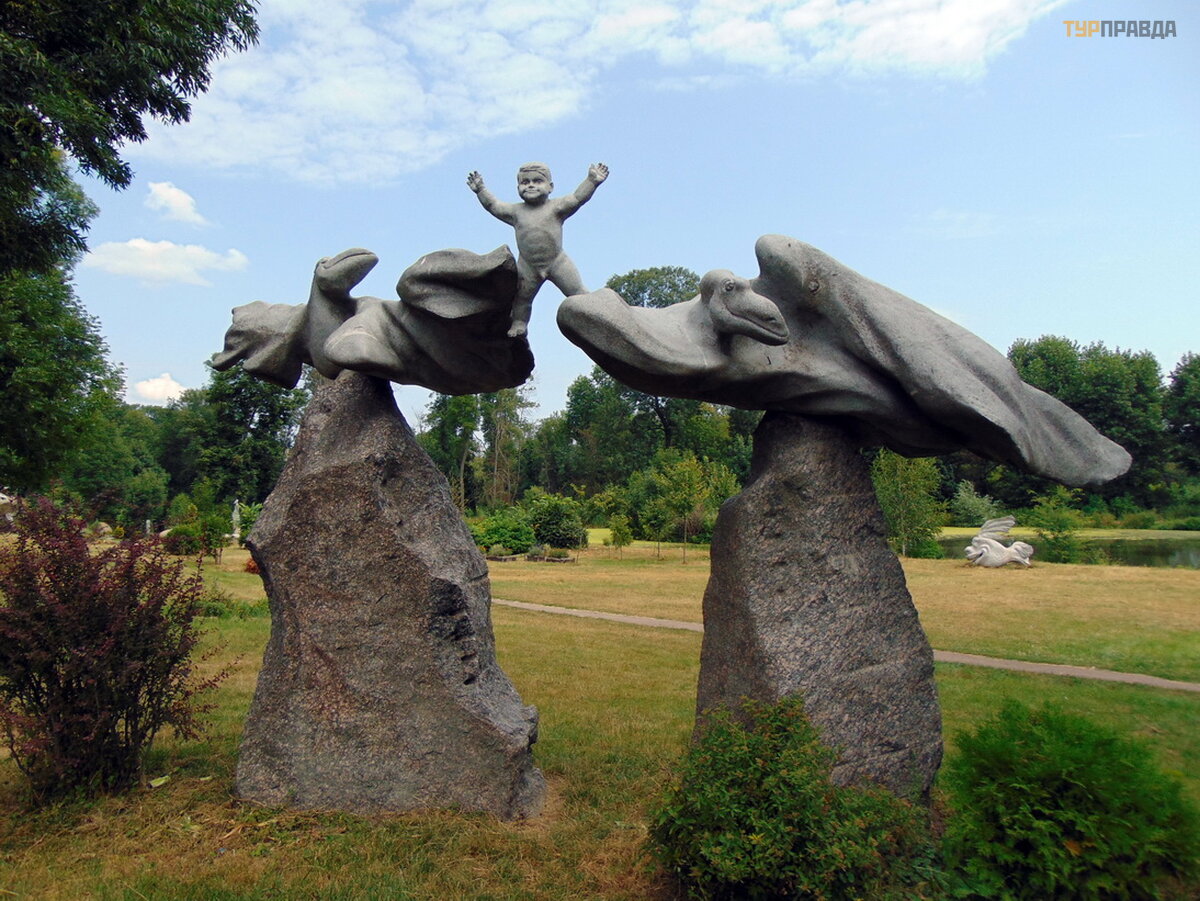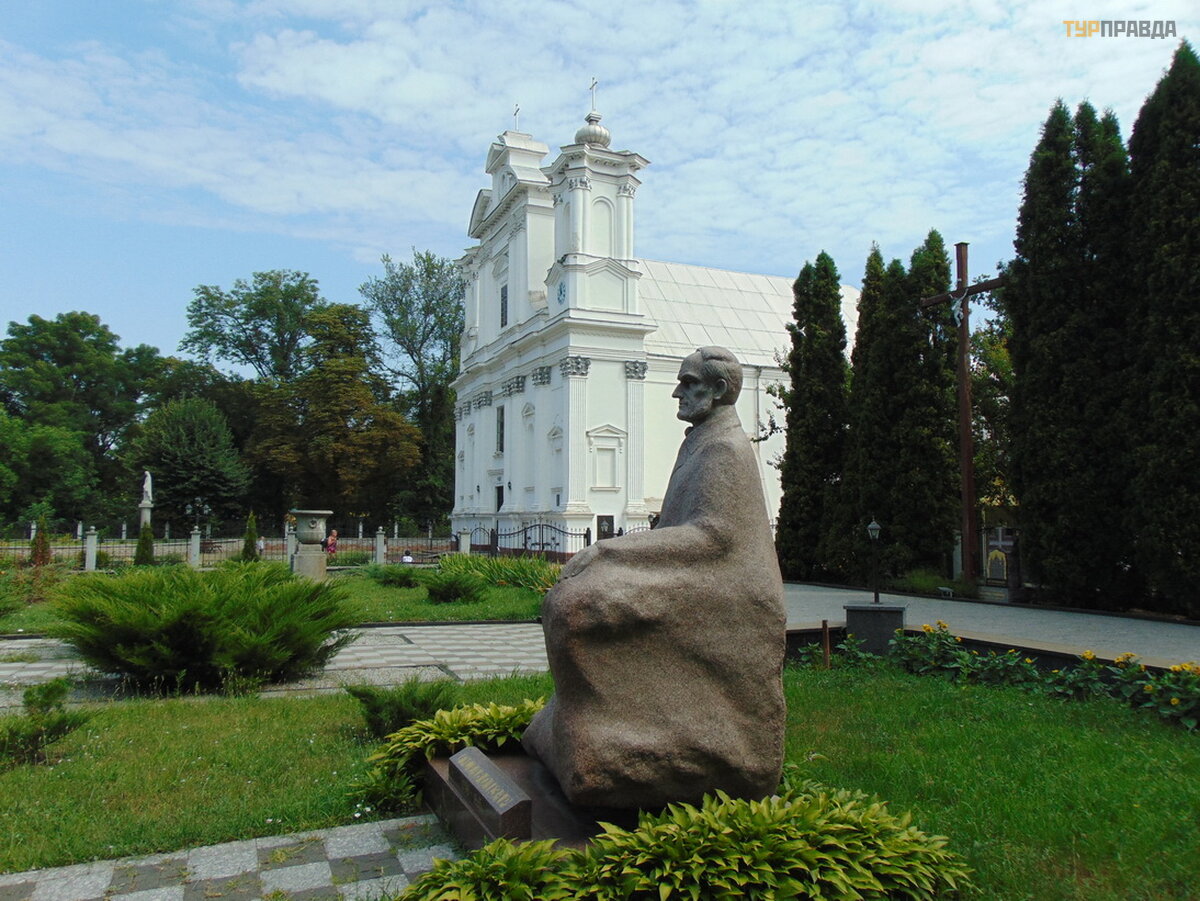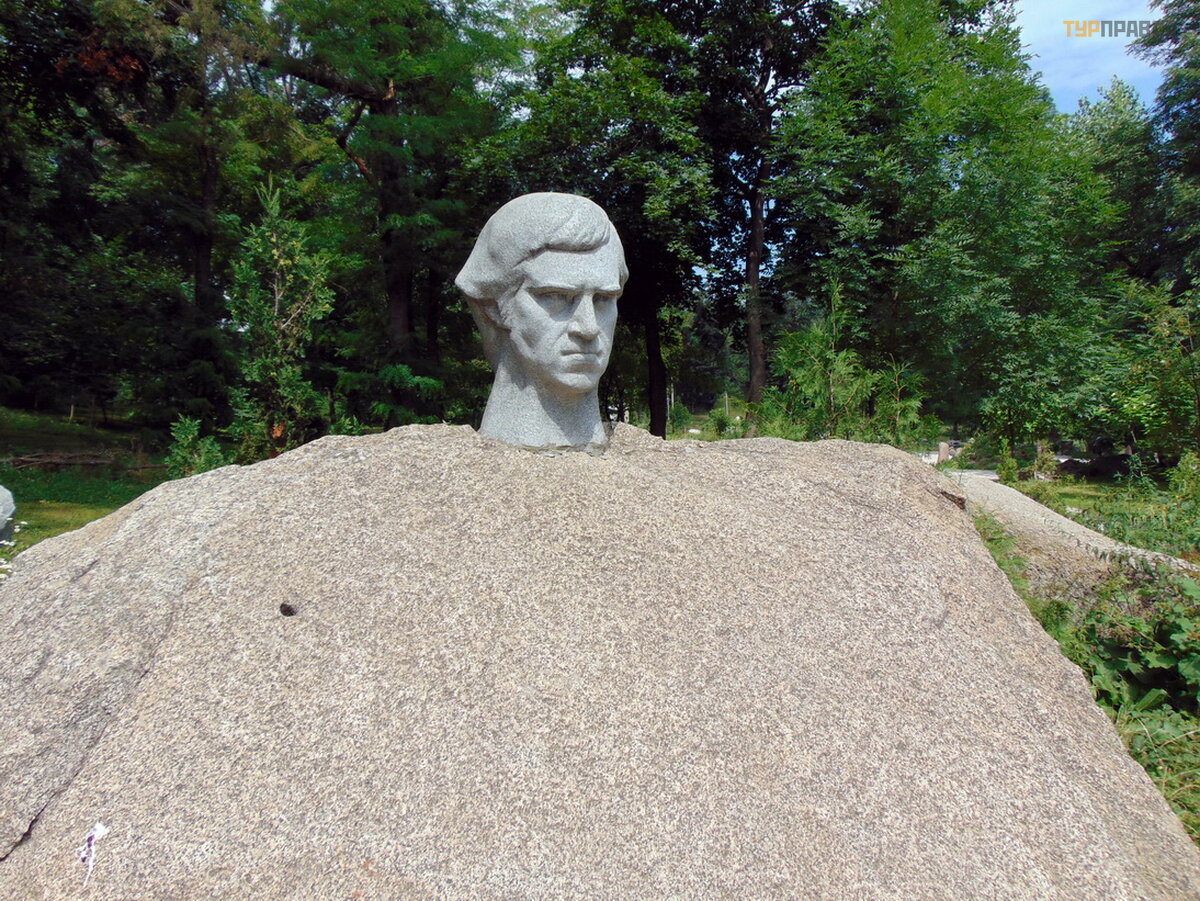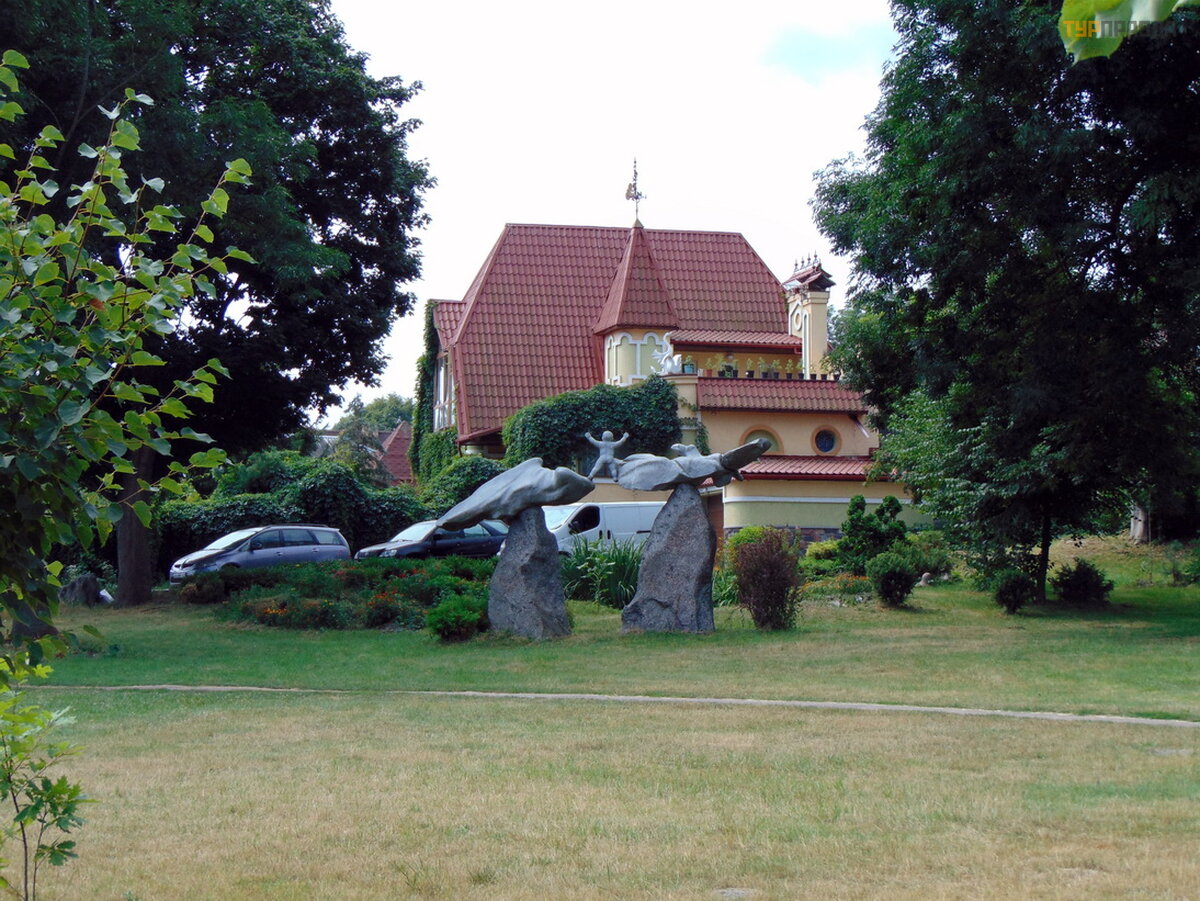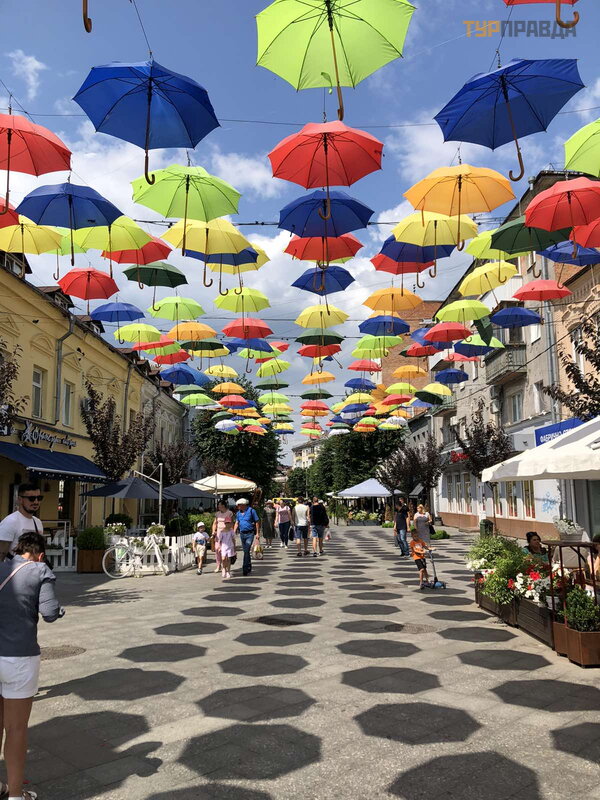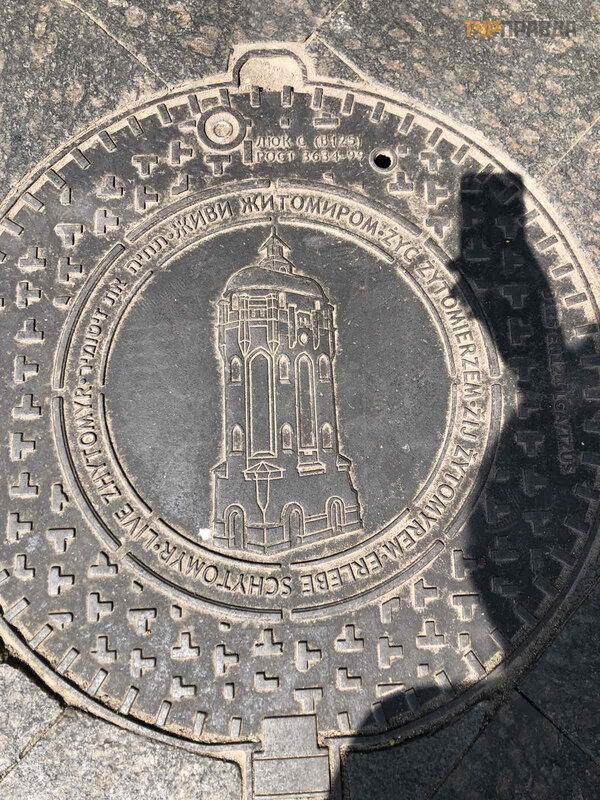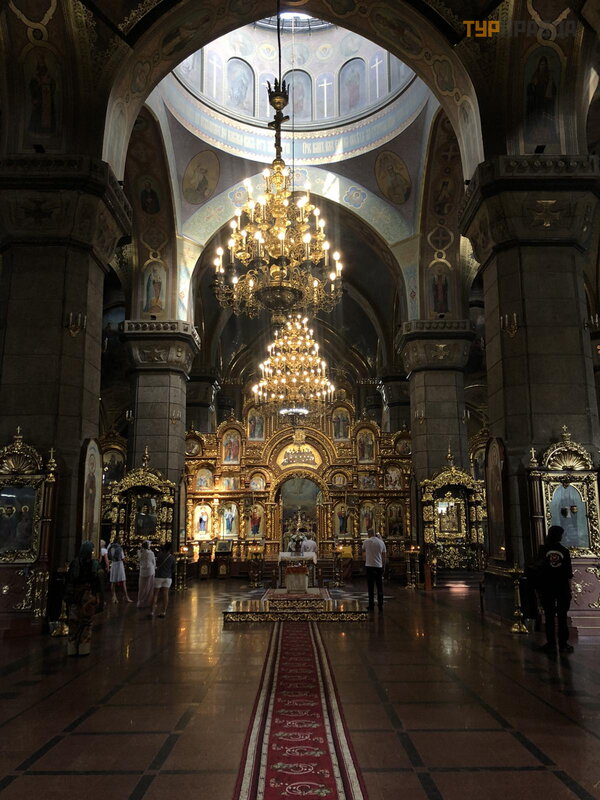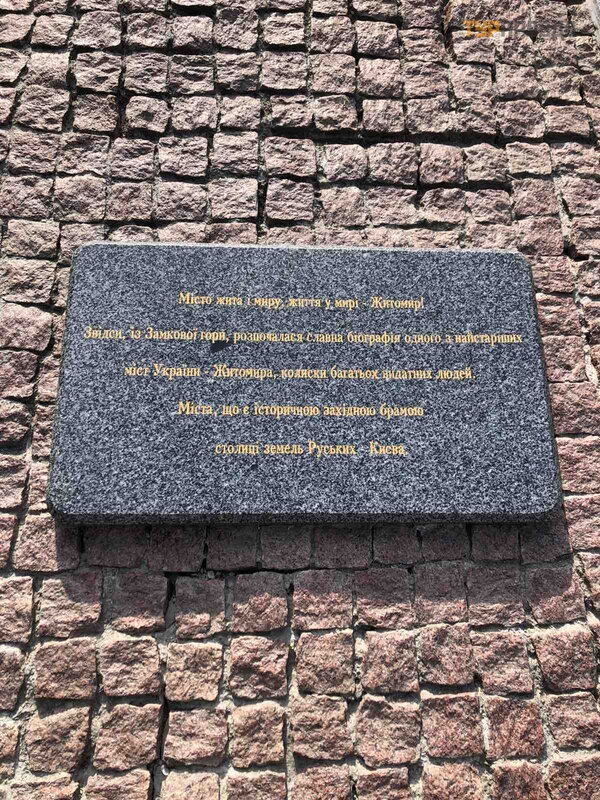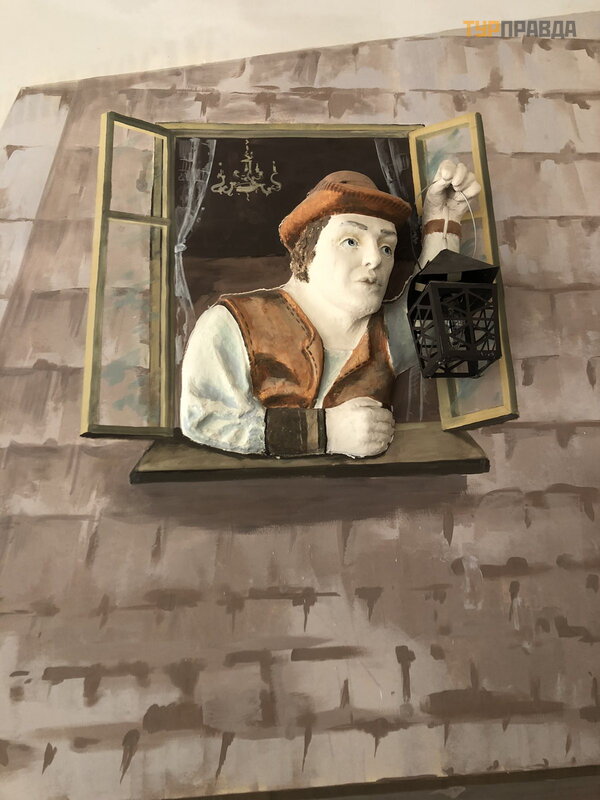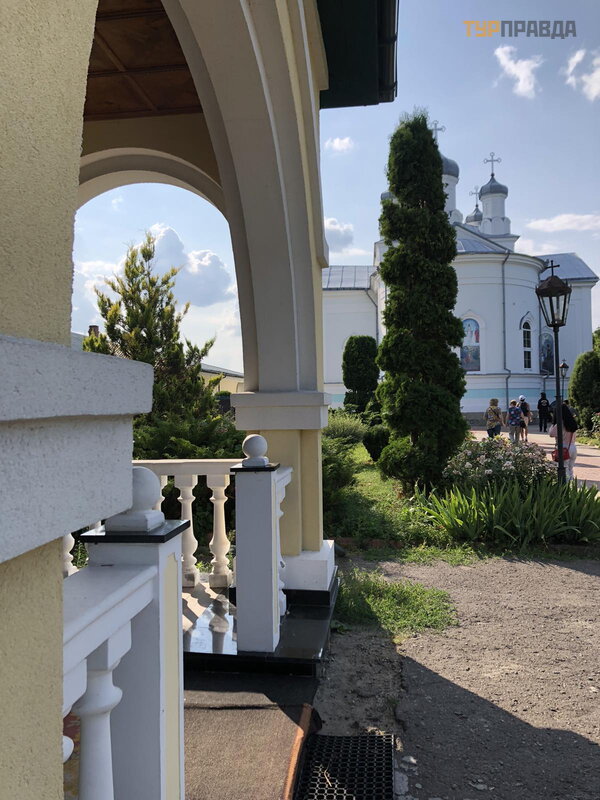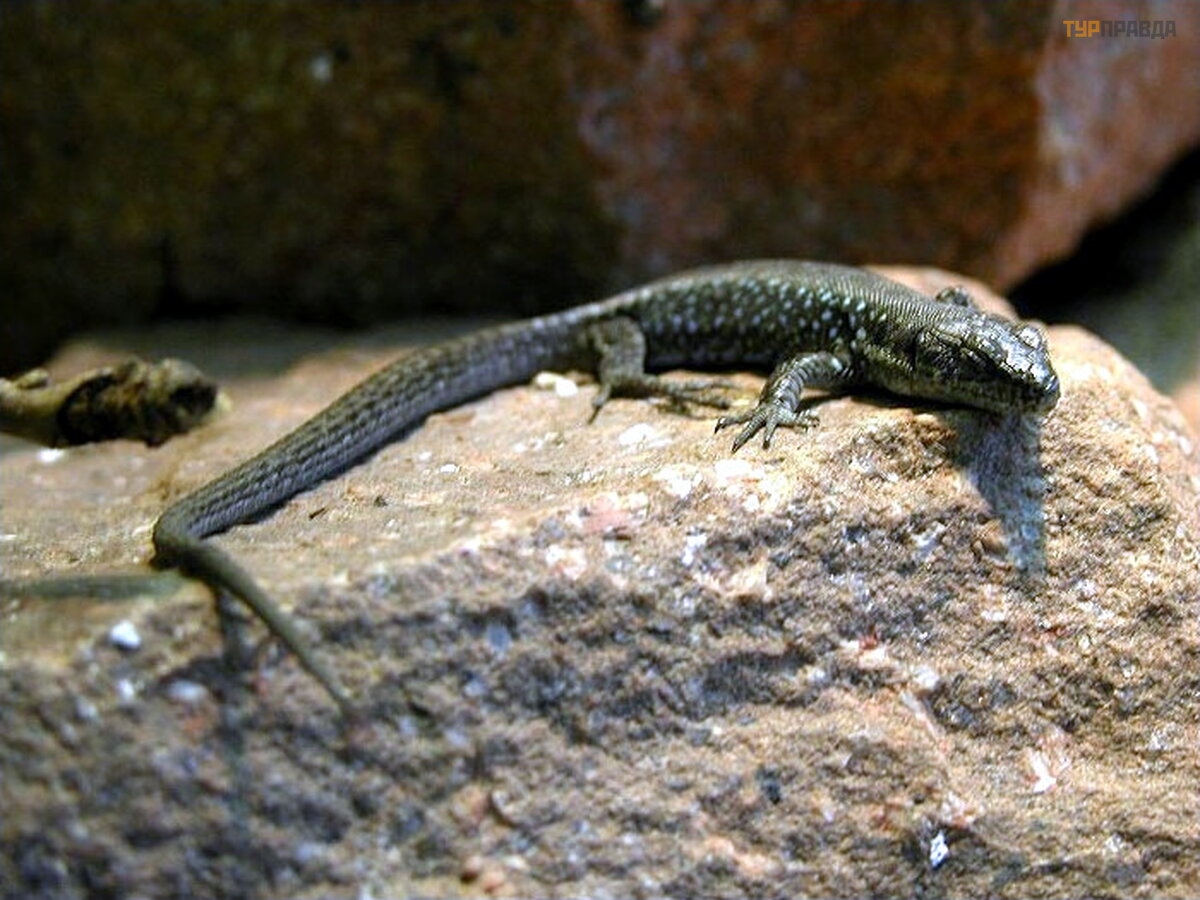"Legends of the Granite Shores"
This is the romantic name of a sightseeing one-day tour from Kyiv to the Zhytomyr region from the Krayina Yua company.
This is the second time we travel with this company. They have everything well organized. And what a beautiful info sheet they send!
The program is very rich: departure from Kyiv at 8.00 am, transfer to Korostyshiv.
First, we look at the Korostyshevsky quarry.
Its history is very prosaic: the quarry began its work in 1850, labradorite and gray granite were mined there. During the revolution, the quarry stopped its work, because. was in the war zone, but then resumed mining again.
In 1930, under the guidance of architect A. V. Shchusev, a monolith of black labradorite weighing 60 tons was made in the Korostyshevsky quarry for the construction of Lenin's mausoleum in Moscow.
During the Second World War, the Germans wanted to reopen the quarry, but they were prevented by underground workers. And at the end of the war, due to the large volume of restoration work, granite mining was resumed. The quarry worked until the 90s, after which it was flooded, because at the bottom of the quarry the springs had already begun to beat.
Now the quarry is a picturesque artificial lake.
Most of all in this place we were struck by the number of people resting there.
But that's not the point.
Unfortunately, many vacationers leave their trash behind. Therefore, the quarry is rather dirty, which spoils the impression of this corner of nature.
The height of the rocks above the water is about ten meters.
Wooden stairs are equipped for descending.
We have time to go around the quarry, go down to the water, and even swim.
The next point of the program is the Korostyshevsky city park, which is a monument of landscape art of local importance.
The park, whose territory is nine hectares, is located on the left bank of the Teterev River.
It was founded in 1820 by the owner of the land, Gustav Olizar.
The monument to Olizar stands next to the church.
Gustav Olizar is a Polish poet and public figure with a difficult fate.
The first owner of the Crimean estate Artek, which he renamed Kardiatrikon ("Heart Medicine").
He was in love with Maria Raevskaya, who later became the wife of the Decembrist, whom we already know as Maria Volkonskaya. (Maria's father refused Gustav Olizar because they were of different faiths, Olizar was a Catholic).
It was in the Crimean estate that the hermit life was supposed to drown out the wounds of the heart.
But that's another story. . .
Olizar's estate in Korostyshiv has not been preserved. In Soviet times, a cinema was made from the church. But for 30 years now, the church has been returned to believers.
After inspecting the church, we move to the city park.
Now the Korostyshevsky city park is filled with a large number of modern sculptures. Local avant-garde sculptor Vitaly Rozhik uses granite boulders to create unusual sculptures. You can recognize many famous people in them, for example. . .
Einstein. . .
Vladimir Vysotsky. . .
. . . Klitschko brothers (very controversial composition), and others.
We really liked the "Cossack" Poseidon, who swims on a platform in the middle of a small lake.
And also "Korostyshevsky" Stonehenge.
The unusual house of the sculptor is also located in the park.
After Korostyshev we go to Zhytomyr.
Here we have a sightseeing tour of the city, which does not involve visiting museums. (You will definitely need to go to Zhytomyr on your own to visit the most interesting Museum of Cosmonautics, as well as the Museum of Local Lore).
First stop at S. P. Korolev Square. And what immediately catches your eye is an unusual monument to the Heroes of the Heavenly Hundred. The monument was opened on August 23.2017 on the eve of the Independence Day of Ukraine in front of the building of the Zhytomyr Regional Administration. The authors are a married couple of sculptors Yuliya Gerez-Gladka and Petr Gerez. This monument is dedicated to the heroes of the Ukrainian revolution of 2013-2014, who gave their lives in the fight against the pro-Russian regime and are commonly called the Heavenly Hundred.
A translucent man is placed on a pedestal in the center of the composition, at the bottom we see the Euromaidan motto "Heroes do not die", behind there are three high metal plates depicting doves, elements of traditional embroidery and silhouettes of people with the names of dead heroes. In the evening, the monument is illuminated and looks completely unusual.
The architecture of old Zhytomyr is hard to see. The fact is that in Soviet times the entire city center was built up with typical high-rise buildings, so much so that there was no single pedestrian zone left. For example, on Cathedral Square, where in the 19th century there were four cathedrals of different confessions, now the cathedrals themselves are practically invisible, their domes are visible somewhere in the distance behind the houses.
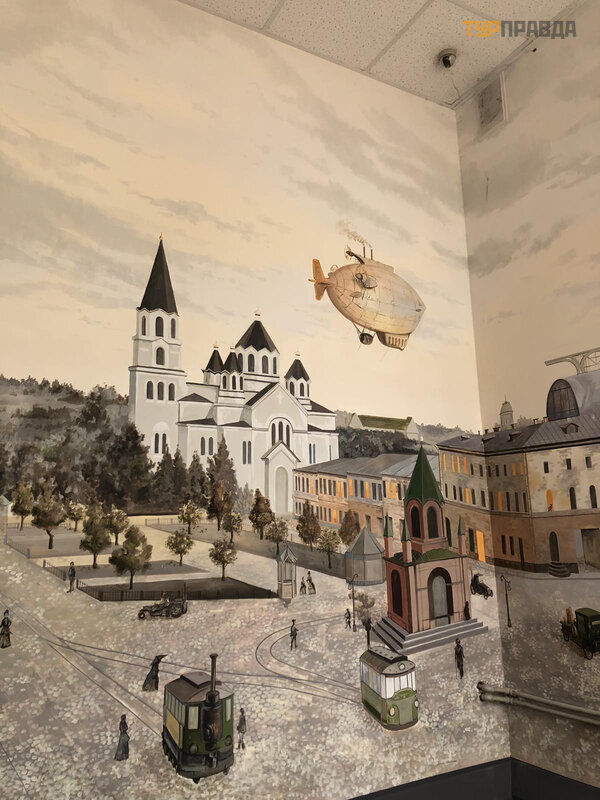 Sobornaya Square of Zhytomyr looked like this in the 19th century
Sobornaya Square of Zhytomyr looked like this in the 19th century
But gradually the city is trying to arrange a pedestrian zone, looping it, as in most cities. We visited the pedestrian Umbrella Street. . .
. . . old. . .
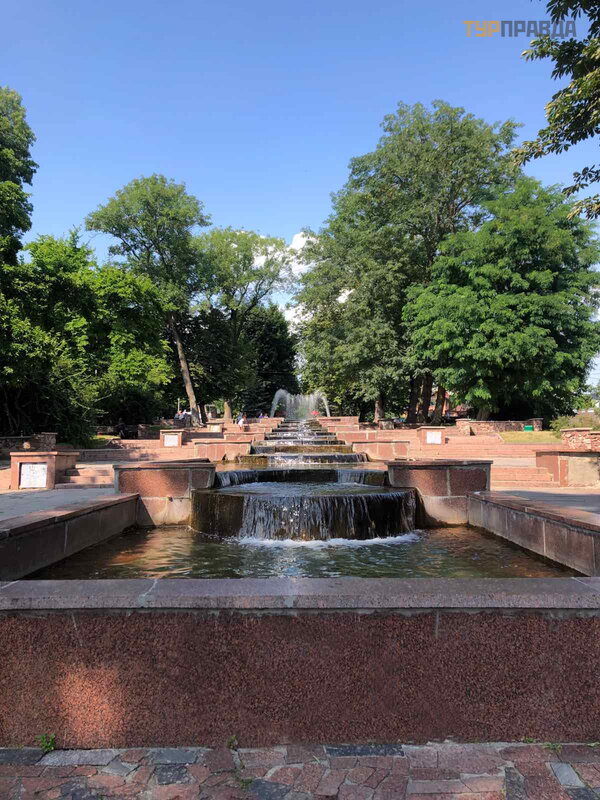 Cascade of fountains in Zhitomir
Cascade of fountains in Zhitomir
. . . and the new boulevards, the Water Tower. . .
. . . (which is depicted on 125 sewer manholes of Zhytomyr, they have an inscription in six languages "Live Zhytomyr"). . .
. . . we went to several temples, including the largest temple in Zhytomyr - the Spaso-Preobrazhensky Cathedral.
The cathedral was built in the Old Russian style, but not only its size is striking: the eye is immediately attracted by three thrones - the Transfiguration of the Lord and in honor of Prince Vladimir and Alexander Nevsky.
The interiors look quite unusual: they are decorated with unpolished granite and labradorite mined in the Zhytomyr region.
But the main highlight of Zhytomyr is Yuri Gagarin Park. Gagarin never visited Zhitomir, but since Sergei Korolev was born in Zhitomir, and Korolev is space, and space is Gagarin, the park was named after him.
Although the city park bears the name of the first cosmonaut, there are discussions among Zhytomyr residents about renaming the park to Shoduarovsky. It turns out that Baron Ivan Maximilianovich de Chaudouard, the founder of the park, is a well-known philanthropist and researcher, chairman of the Russian Society for the Protection of Animals. In the 19th century, he built a palace in Zhytomyr, setting up a luxurious baroque park with marble statues, pavilions and exotic plants around it.
Unfortunately, the grave of the count and the count's palace were destroyed during the difficult times of the revolution and wars, and the park lost its authentic look. The Baron de Chaudouard wanted the estate and the park to pass to the children after his death. This is partly what happened: there are a lot of children in the park and they really like it here!
And now there is something to see in the park. The colonnade and the cascade of fountains have been preserved, interesting. . .
. . . a statue of the goddess Artemis, which was badly damaged during the Second World War, but it was restored and returned to the park.
There is almost a "Potemkin Staircase", which is only a few steps behind its Odessa "relative".
But the biggest decoration of the park is the Pedestrian Bridge.
This unique structure on metal cables was built in 1982 as part of a large complex of military glory. The bridge stretched for 350 meters in length over the steep slopes of Teterev. It is fastened with braces, since it was technically impossible to drive piles into granite.
The bridge offers a beautiful view of the city, the dam and the rocks near the park.
In general, it was planned to open 13 bridges along the Teterev River in the Zhytomyr region, which would connect Gagarin Park and the Monument of Glory into a single ensemble. But there wasn’t enough money for this project (apparently, they were mastered in a different way), and instead of numerous bridges on the Castle Hill of Zhytomyr, such a huge block of granite weighing 87 tons was erected for the townspeople!
It is not clear what the city authorities were guided by, but it was not easy to drag this hulk from the quarry: it was impossible to load it onto a truck (the truck takes a maximum of 60 tons and at the same time breaks the road), they loaded it onto a military tractor, burned one, but on the second everything still dragged. This miracle now rises in the middle of the old Market Square and "decorates" it: )
In Zhitomir, we have a set lunch at the Korolev pub.
The pub is located on the outskirts of Zhitomir. We were not very satisfied with lunch: the borscht was delicious, but they obviously saved money on the cutlet, it weighed 30 grams at most. For the same 4 euros at the exchange rate on our recent trip to Montenegro, we could not overpower a set lunch. It's a shame that in Ukraine they began to feed tourists so poorly.
So that the guests don't get too upset, the waitress leads us to the basement of the pub, which is decorated in a steampunk style photo zone. . .
. . . and very reminiscent of the scenery for the movie "Mad Max. Fury Road.
This brightens up the impression of a weak lunch, and the group happily takes pictures in unusual scenery.
The last point of our excursion is an optional trip to Denishi. In it, we first of all examine the ruins of one of the palaces of the sugar factory Tereshchenko.
In the Zhytomyr region, Tereshchenko built estates in Denishi, Chervon, Turchinovka, but only one of them, the one in Denishi, was called "Tereshchenko's Castle". The castle was built at the end of the 19th century according to the design of the architect P. Hollandsky. Even from what remains of the castle, one can see its unusual execution. Remains of stucco decorations are still visible on the surviving walls of the palace, and a three-tiered tower rising above the ruins of the palace emphasizes its former grandeur.
There are niches for figurines at the main entrance. It is difficult to guess where the fountain was. And the park has long been overgrown and more like a forest. It is sad to look at what was once beautiful.
We are going to Denishi's Stone Village. On the way we stop at the Spaso-Preobrazhensky Trigorsky Monastery.
It is located on the shore of the reservoir. There is a service, so we don’t go into the temple, but just inspect the territory.
According to unconfirmed data (commemoration lists), the monastery was founded in 1583 by Prince Vladimir Zhitomirsky. The problem of the history of the founding of the monastery is that at the end of the 16th century. these lands were not princely, but were part of the Volyn Voivodeship of the Commonwealth. Perhaps, Prince Vladimir of Zhitomir means the specific Kyiv prince Vladimir Olgerdovich, who lived much earlier?
The territory of the monastery is very well-groomed.
There are many flowers, and the pyramidal cypresses, on this hot July day, remind me of Italy.
Not far from the monastery there is a dam across the Teterev River. And in front of her grow oaks, which are already 600 years old!
We are crossing the dam, unusual Armenian lizards are basking on it.
They are small, black, almost invisible. These lizards live in the mountains in the northwest and north of Armenia at an altitude of 1000-1500 meters.
In 1967, this species was brought to Ukraine for scientific purposes, where it formed a stable population in the rocky canyon of the Teterev River in the Zhytomyr region (that is, they do not escape anywhere). And for more than 50 years, the number of the species is high and stable. We can only hope that the alpine lizards have taken root in Denishi, thanks to the good ecological situation of this place.
After crossing the dam, we get to the final point of our excursion - a rock mass.
Granite rocks, picturesquely stretching along the banks of the Teterev River, are named after the village of Denishi, which is located a little further downstream.
The height of the rocks in these places reaches 20-25 meters, and the length is more than 150 meters. The massif is small, but very picturesque and has long been chosen by rock climbers.
It is equipped with about thirty bolted routes of different difficulty levels, with their own "cool" names, such as "Skunk", "Welcome", etc. So it is interesting to train here not only for experienced climbers, but also for beginners. Granite rocks in Denishi are popular both in Ukraine and abroad.
Many climbers come from Poland and Belarus. Both above and below the rocks there are many tents, people carry not only climbing equipment, but also bottles of drinking water. I hope that they will take all this plastic with them later.
And we return to Zhytomyr and make the last stop at the Monument of Glory. Actually, the monument itself is of little interest to us, because we have “Legends of Granite Coasts”, but from the observation deck near the monument, the Zhytomyr Dam and the “Chatsky’s Head” are clearly visible.
The Chatsky's Head granite massif is located on the left bank of the Teterev above the dam. It got its name from a natural attraction - a rock in the shape of a head, which hangs over the water and is clearly visible from the observation deck near the dam. The height of the rock is 30 meters. This is a geological monument of national importance. There is a legend according to which the Polish gentry Chatsky threw himself into the river from the rock “Chatsky's Head” while being pursued by the Cossacks.
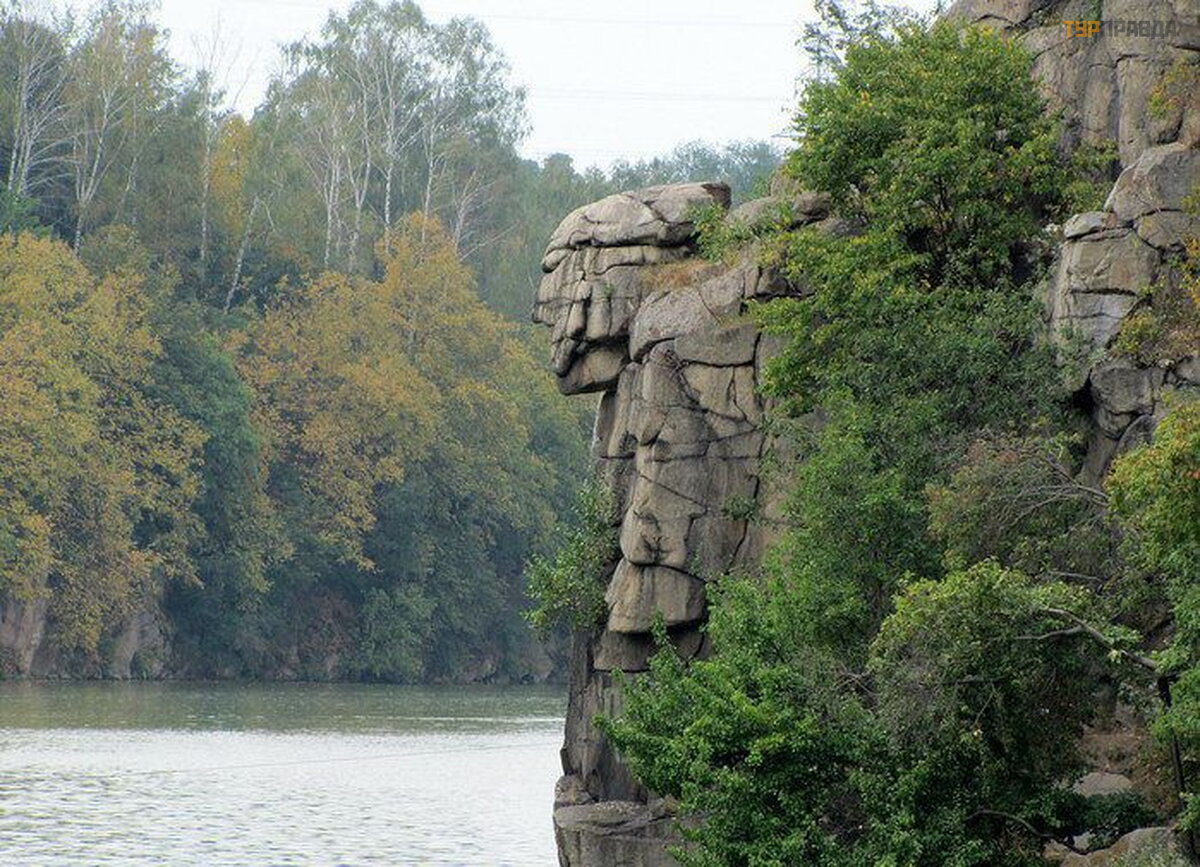 Photo from the Internet, we couldn't get that close
Photo from the Internet, we couldn't get that close
According to another version, the rock was named after the founder of the Kremenets Lyceum, Tadeusz Chatsky. Chatsky's head is a hallmark of Zhytomyr and has been depicted on postcards since at least the 19th century.
The program of our tour is over. We are going to Kyiv tired and satisfied. We recommend visiting these places for everyone who is interested in the natural beauties of the Zhytomyr region.
From the series "Know Ukraine".





